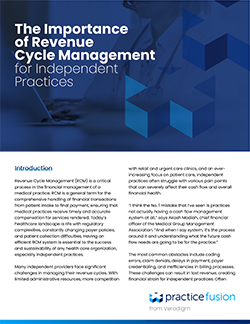The Importance of Revenue Cycle Management for Independent Practices
Revenue Cycle Management (RCM) might sound like a behind-the-scenes process—but for independent medical practices, it’s the heartbeat of financial health. RCM covers every step from patient check-in to final payment, making sure providers get paid accurately and on time. And let’s face it: with today’s constant changes in insurance policies, tighter regulations, and rising patient payment responsibilities, a smooth RCM system isn’t just helpful—it’s essential.
Independent practices have a lot on their plates. Between managing patients, competing with retail clinics, and juggling limited admin resources, it’s easy for revenue cycle issues to pile up. Many practices don’t even have a proper cash flow system in place, which Akash Madiah from the Medical Group Management Association says is a major mistake. Without it, it’s tough to predict what’s coming—and even harder to stay ahead financially.
From coding mistakes and claim denials to slow payments and credentialing headaches, the challenges are real—and they hit hard. These common pain points can quickly snowball into lost revenue and financial stress. And most of the time, it’s simply because practices are too overwhelmed to keep up.
This white paper breaks down the real value of RCM and why it’s a game-changer for independent practices. Inside, you’ll find strategies to boost billing accuracy, streamline operations, keep patients happy, stay compliant, and reduce financial risk. Bottom line? A better RCM system means a healthier practice—and more time to focus on what matters most: patient care.


Download Your Complimentary Copy
By downloading this resource, I agree to sign up to receive newsletters and special offers from HealthLeaders and the sponsor. I understand that I can opt out at any time. Privacy policy.